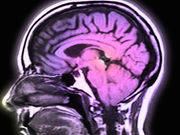Images of the brains of Brazilian newborns and fetuses suggest the virus affects multiple sites
TUESDAY, Aug. 23, 2016 (HealthDay News) — Imaging is revealing a wide variety of brain defects, eye defects, hearing issues, and stunted growth in newborns whose mothers were infected with the Zika virus, according to the special report published online Aug. 23 in Radiology.
Deborah Levine, M.D., director of the obstetric & gynecologic ultrasound unit at the Beth Israel Deaconess Medical Center and professor of radiology at Harvard Medical School in Boston, and colleagues examined medical scans and autopsy results from 17 fetuses and newborns in Brazil confirmed to have Zika infection and 28 fetuses and newborns suspected to have Zika infection. The imaging exams in the study included fetal magnetic resonance imaging (MRI), postnatal brain computed tomography, postnatal brain MRI, and longitudinal prenatal ultrasound.
Nearly all of the infants in either the confirmed or suspected Zika infection groups had ventriculomegaly. Most fetuses also had at least one imaging exam that showed an abnormally small head size. However, defects occurred even when head size was normal — for example, severe ventriculomegaly was seen in three fetuses with normal head size. The investigators also found that 94 percent of the confirmed-Zika group, and 79 percent of the suspected-Zika group, had abnormalities of the corpus callosum. All but one of the infants also had cortical migrational abnormalities. Almost all the infants had intracranial calcifications, and all had reduced tissue volume in their brains, along with abnormal cortical development.
Lead author Fernanda Tovar-Moll, M.D., Ph.D., a professor at the Federal University of Rio de Janeiro, told HealthDay that, “the severity of the cortical malformation and associated tissue changes, and the localization of the calcifications at the gray-white matter junction were the most surprising findings in our research.”
Copyright © 2016 HealthDay. All rights reserved.








